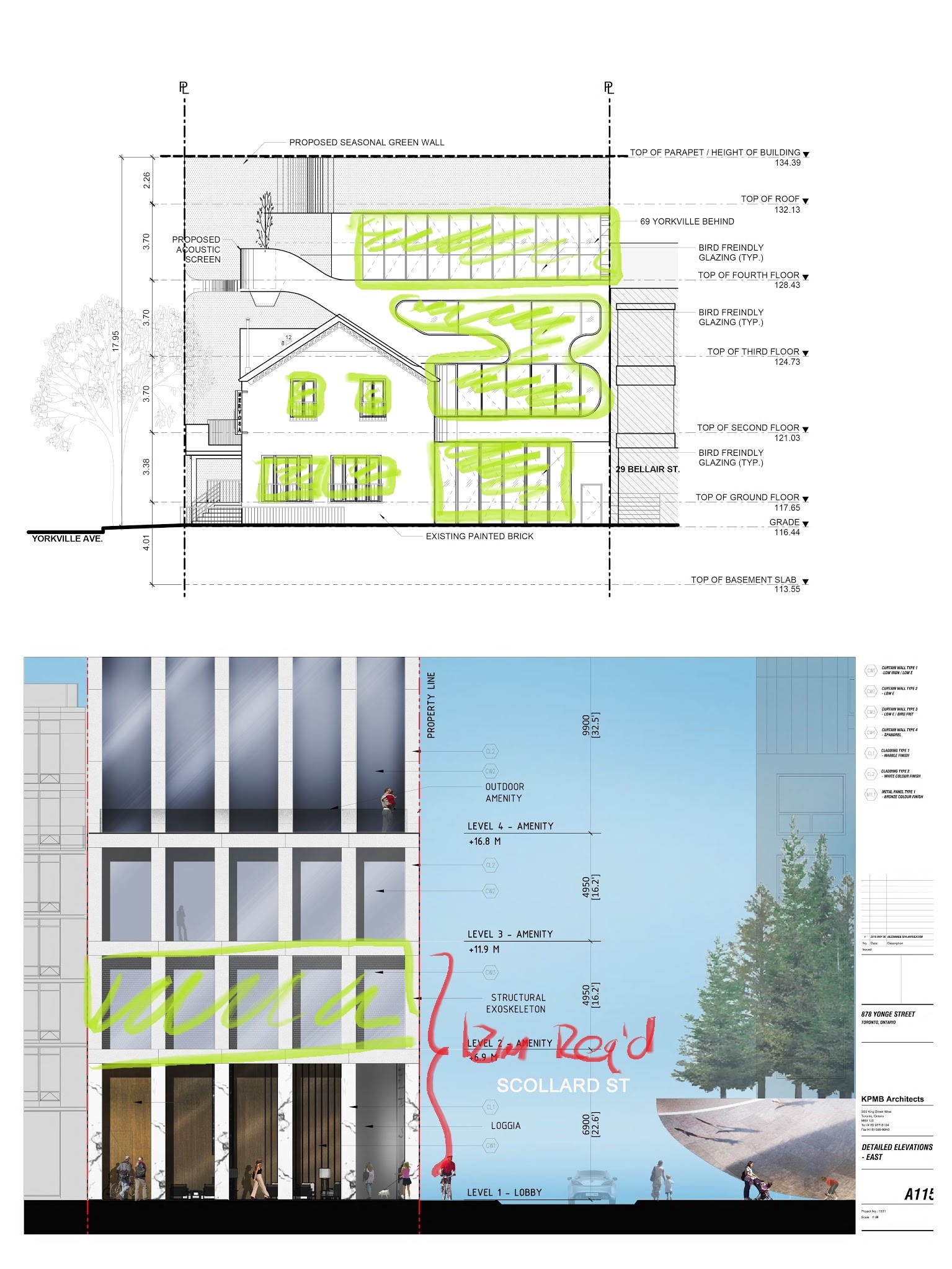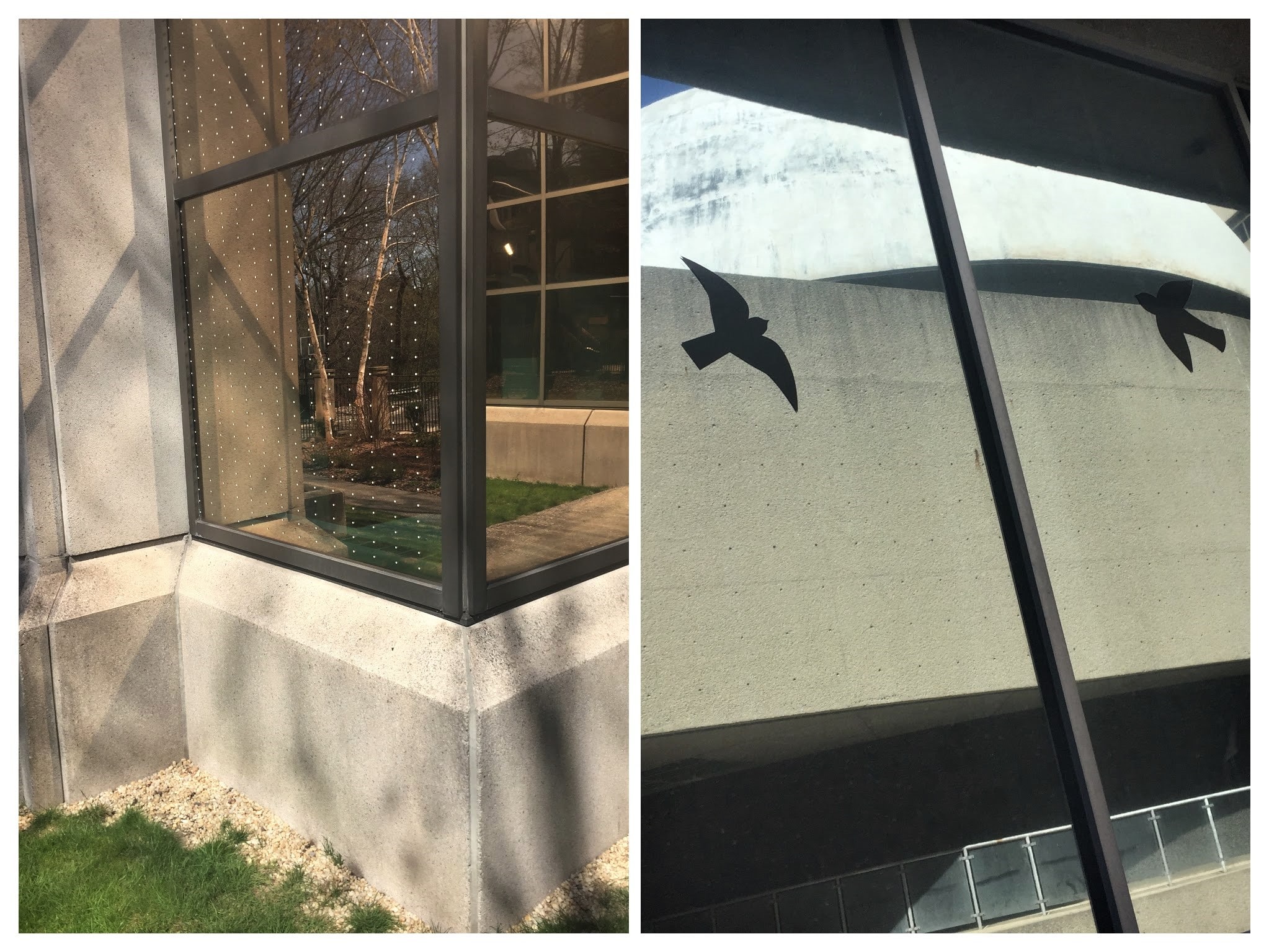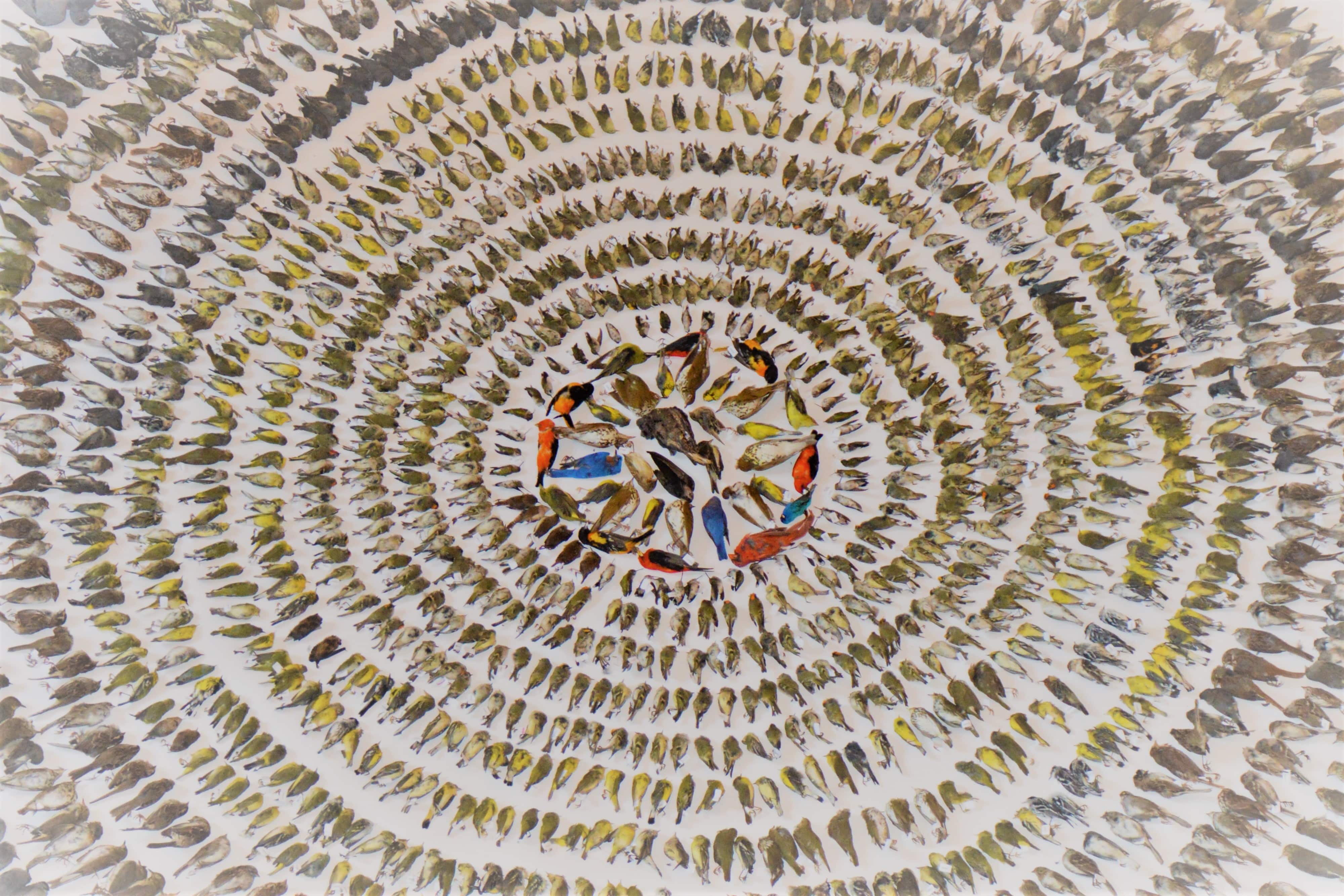It’s Bird Migration Season! What You Can Do To Care For and Prevent Injured Birds
This article originally appeared on the Bloor-Yorkville BIA Blog
FLAP Canada’s 2016 Bird Layout. Image courtesy of FLAP Canada
Birds in the City: A Rough-and-Tumble Life
Toronto is a migratory bird hotspot: we are visited by birds flying north in the spring (and south again in the fall) from both the Atlantic and Mississippi flyways. Like many human Torontonians, migrating birds love our high-quality lakefront properties, including the lush Toronto Island and bustling Tommy Thompson Park.
Sadly, migratory birds get confused, injured, and killed by two things found in abundance in downtown Toronto—artificial light and glass. Problems with birds and glass are well-known: unlike us, birds don’t understand that what they see in a window is a reflection. As a result, thousands fly into city windows thinking that a reflected surface is a restful tree or open sky. At high speed, the collision is usually fatal. The City of Toronto’s best practices guide for bird-friendly glass cites a study that estimated that in Canada, about 25 million birds die each year from colliding with windows. It is a huge and pressing problem.
Less well-known are the problems caused by artificial light. Many migratory birds fly at night when it is cooler and safer from predators, using the moon and stars for navigation. Light coming from our cities confuses and attracts these birds, drawing them into the city where they are at risk of being harmed by busy roads or reflective surfaces. This phenomena is called “Fatal Light Attraction.”
One group trying to solve these problems is Fatal Light Awareness Program (FLAP) Canada. This Toronto-based group and its volunteers run an emergency bird rescue program out of Metro Hall at 55 John Street. They also educate Torontonians about the dangers faced by migratory birds and advocate for policies and architecture that helps to protect them. While rescuing birds, they also collect data about when and where different species of birds are killed to emphasize the importance of taking action. There are 20 types of birds listed under the Species at Risk Act on their record of species that have been found dead after colliding with glass.
City Planning to Reduce Bird Deaths
The Toronto Green Standard is a checklist for developers that helps to create more sustainable buildings. It has two tiers, and a variety of measures that can be implemented, ranging from improvements to energy efficiency to protections for migrating birds.
The first tier is mandatory for new developments. Among many other requirements, it specifies that new buildings must treat at least 85% of all exterior glass within the first 12 meters of a building in a way that prevents confusing reflections. This can be done using materials that are low-reflecting and opaque, or visual markers such as “fritting”—the application of ceramic dots to the glass during manufacturing. You can see these methods being used in planned developments in Bloor-Yorkville:

Development proposals in Bloor-Yorkville with bird-friendly glass marked in green: Top – 75 Yorkville Ave, Bottom – 848 Yonge Street.
The second tier of the Toronto Green Standard is optional, but the City offers financial incentives for developers who meet this higher level of sustainability. Bird protection measures in this tier include a requirement to point architectural illumination downwards and turn it off completely between 11 p.m. and 6 a.m. during the migratory season so that the light does not confuse migrating birds. There is also an option to increase the coverage of bird-friendly glass to 95% of the building’s first 12 meters. So far, tier two buildings are rare (the City’s website lists about 10), but hopefully one will be planned for Bloor-Yorkville soon.
How You Can Help:
-
Turn off unnecessary lights at home and at work – especially when you are leaving work at the end of the day. (A timer plug extension might help).
-
On the outside of your building, place visual markers on window-glass (5 cm apart) or hang ribbons or strings in front of windows (10 cm apart). (See FLAP’s tips on window-markers—the small details do matter.) It’s OK to be a little creative with window markers: the Pan-Am aquatic center has small graphics of athletes instead of dots and it complements their overall branding.
-
Speak with your property manager about using lights that turn off automatically and installing special film outside of windows to reduce reflection.
-
Place bird feeders close to your windows (less than half a metre away) so birds leaving the feeder cannot hit your window at high speed if they go in the wrong direction.
-
Volunteer with FLAP Canada to help with bird rescue and research.
Take action tips from City of Toronto Communications.
Strategies That Don’t Work
- Predator Bird Decals: Many people think that large stickers of birds-of-prey will scare off smaller birds from windows, but experiments have shown that it doesn’t work! Smaller markers that are close together, such as dot stickers 5 cm apart, work much better.

Two types of decals: Left – small dot markers about 5cm apart. Right – bird-of-prey decals, which are ineffective.
-
Angled Glass: The updated City of Toronto Bird-Friendly Guidelines has removed angled glass as a strategy due to a lack of supporting scientific evidence. Birds fly in all directions, so it makes sense that this would not reduce the impact of collisions.
-
Interior Blinds: Markers never disappear, and they sit on the outside of a window. Blinds are designed to be taken up and down, and sit behind the glass. To be effective, window applications or coverings need to be on the outside so they block or obscure any confusing reflections.
-
Tinted Glass: Like angled glass, there isn’t enough evidence to say that tinted glass helps reduce collisions. There are anti-reflective applications listed in the Toronto Green Standard that will work.
-
Interior Screens: Like blinds, these sit behind the glass. There is a lack of evidence that putting interior screens behind windows will help prevent birds from colliding with the glass.
Strategies to avoid taken from Bird-Friendly Development Guideline: Best Practices – Glass (2016)
What to Do If You Find a Dead or Injured Bird:
If you see a bird knocked out from colliding with a window or if you find an injured bird on the ground, this is what you should do:
-
Try to handle the bird as little as possible.
-
Gently place the bird in an un-waxed paper bag or cardboard box. Keep the container closed (you can poke some air holes in the top).
-
Do not give the bird water or food.
-
Roll clean tissues or paper towel into a donut shape and put it in the container as a perch for the bird to sit upright.
-
Temporarily keep the bag or box in a safe, quiet location.
-
If you hear the bird fluttering inside the container within an hour, take it to a park, ravine, or any other area away from hazards, such as windows, buildings, or busy roads, and slowly open the container to let the bird fly out.
-
Contact the Toronto Wildlife Centre for more instructions if the bird has not shown any activity after one hour.
Recuperation tips from FLAP Canada. See their website for more Frequently Asked Questions about helping birds.
